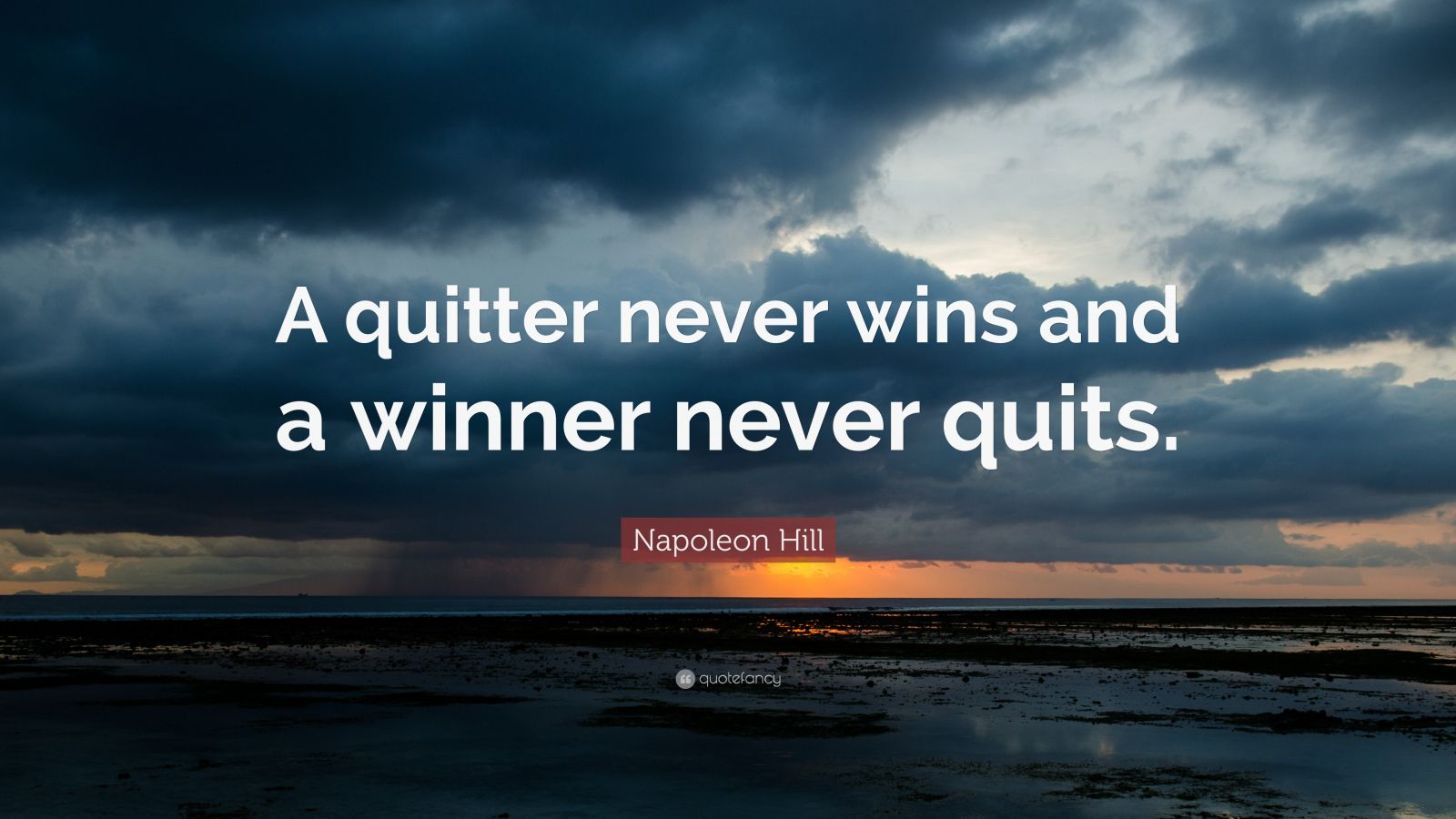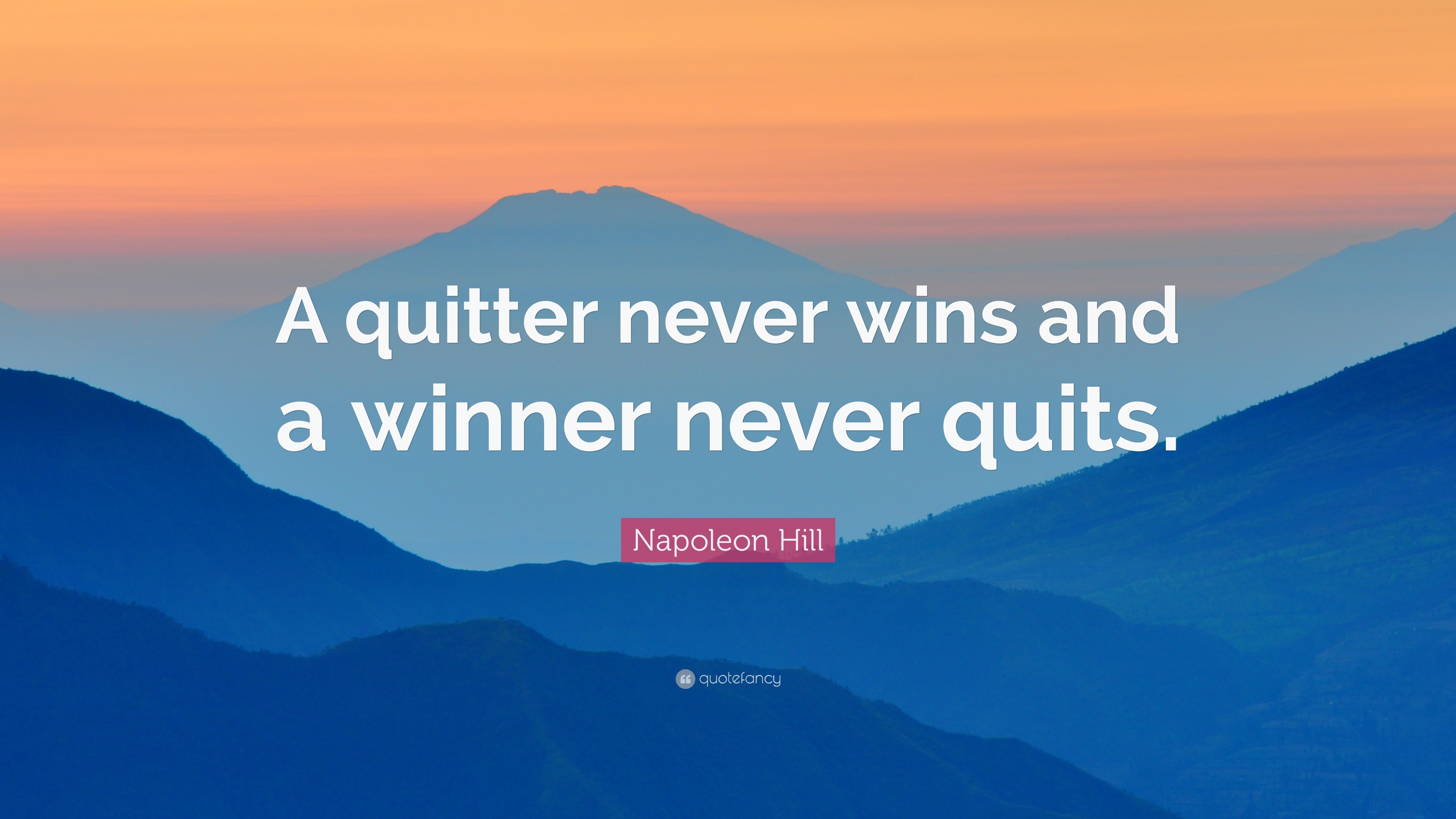

A QUITTER NEVER WINS TAB HOW TO
Now that we’ve covered the basics of how to read guitar tab, request a free trial lesson from best guitar teachers in Michigan. The note is partially muted by the pick hand lightly touching the string(s) just before the bridge.Ī percussive sound is produced by laying the fret hand across the string(s) without depressing them and striking them with the pick hand.

The note is fretted normally and a harmonic is produced by adding the edge of the thumb or the tip of the index finger of the pick hand to the normal pick attack.Īs heard on La Grange by ZZ Top PALM MUTING Strike the note while the fret hand lightly touches the string directly over the fret indicated. The note is picked as rapidly and as continuously as possible.Īs heard on Airbag by Radiohead NATURAL HARMONICS Very rapidly alternate between the notes indicated by hammering on and pulling off. The pitch is varied to a greater (exaggerated) degree by heavily vibrating with the fretting hand.Īs heard on Purple Haze by Jimi Hendrix TRILL The string is vibrated by rapidly bending and releasing the note with the fretting hand.Īs heard on Shine On You Crazy Diamond by Pink Floyd WIDE VIBRATO A Quitter Never Wins Sheet Music Blues Guitar Tab White Pages by Hal Leonard LLC Enjoy millions of eBooks and audiobooks, and unlimited sheet music on the. Same as legato slide, except the second note is struck. The second note is not struck.Īs heard on Hold Fast Hope by Thrice SHIFT SLIDE Strike the first note and then slide the same fret-hand finger up or down to the second note. Only the first note is struck.Īs heard on 4th of July by Soundgarden LEGATO SLIDE Strike the note and bend up to the indicated pitch, then release back to the original note. Strike the note and bend up to the indicated pitch. Strike the first note and without picking, pull the finger off to sound the second (lower) note. Place both fingers on the notes to be sounded. Strike the first (lower) note with one finger, them play the higher note (on the same string) with another finger by fretting it without picking.Īs heard on Cochise by Audioslave PULL-OFF Here are a few of the most common techniques you will encounter: HAMMER-ON Well written guitar tab will indicate which techniques to use by displaying the proper symbol above, below, or next to the fret number. When playing the guitar, there are several techniques you could use in a song. Chords, however, are placed on the lines vertically, as shown above.Ĭhords are written and repeated to indicate how many times they should be strummed.

Melodies and riffs are written along the horizontal lines (left to right). In the example above, the guitar tab tells you to strum a G chord three times. In the example above the “zero” signifies an open string. Just as the horizontal lines represent your guitar strings, numbers on the lines represent the frets on the guitar. The tab lines represent your guitar with the highest sounding string on top and the lowest string on the bottom. The thickest string (low E) is on the bottom. The numbers placed on the lines, in Figure 2 indicate which fret is to play on the guitar. The thickest string is at the bottom and the thinest string is on the top.

In Figure 1, the six horizontal lines represent the six strings of the guitar. In this article you’ll learn the basics for reading guitar tab and gain an understanding of the various symbols you might see on a page of guitar tab. Released in 2017, Signs isn’t just bursting with tough-as-nails riffs it’s an unapologetically political record that tears into the ills of the modern world with all the howling passion that had made him a blues wunderkind two decades earlier.Guitar tablature (or guitar tab) is a popular (and easy) way of reading and writing guitar notation. But it wasn’t as if Lang had given up his roadhouse roots for a life in the church.
A QUITTER NEVER WINS TAB UPDATE
A bold stylistic leap arrived in 2006 with Turn Around, an update of the archaic gospel-blues tradition that proved popular with secular blues and Christian fans alike. Subsequent albums grew increasingly diverse, showcasing nods to classic rock, funk, vintage soul, and-following his conversion to Christianity in the early 2000s-sacred music. Born in 1981, Lang was a mere teenager when his second record, 1997’s Lie to Me, became a breakout success, yet he already possessed all the poise of a seasoned bluesman, one with a husky cry and blazing fret-work inspired by Stevie Ray Vaughan and Albert King. In the late ’90s, Jonny Lang was hailed as the next great blues six-stringer, and the fiery youngster from North Dakota did not disappoint.


 0 kommentar(er)
0 kommentar(er)
